
Spanish Flamenco Eggs are a typical Andalusian specialty originating from Seville. It is a hearty and nutritious main dish, easy and quick to prepare, ideal to bring to the table for any family lunch or dinner together with slices of toasted homemade bread, or even for a really hearty breakfast!
To make them at home, you just need to brown the chorizo cut into strips with the chopped prosciutto in a non-stick pan, then add the diced boiled potatoes, tomato puree, peas and fresh cherry tomatoes to the pan, and then cook everything until you get a full-bodied and tasty sauce. At this point, you just need to transfer the vegetables to a baking dish, crack a couple of eggs on the surface and put everything in the pre-heated oven until the egg white has become white, and the yolk is covered with a shiny and glossy patina: the result will be a very tasty dish, perfect for mopping up the sauce at the end, to be served immediately while still steaming, even as a single dish.
What Are Flamenco Eggs?
Flamenco eggs (Huevos a La Famenca) are a traditional Spanish dish that hails from the Andalusian region, famous for its vibrant culture and the world-renowned flamenco dance. The dish is a hearty combination of eggs, vegetables, chorizo, and sometimes seafood, all baked in a flavorful tomato sauce. It is often considered a rustic, comforting meal, typically enjoyed as a breakfast or lunch. While the exact origins of flamenco eggs are uncertain, the dish is deeply rooted in the Andalusian culinary tradition, reflecting the bold, diverse flavors of southern Spain. The name "flamenca" is a nod to the region’s rich heritage, symbolizing the passionate and colorful nature of flamenco music and dance, making this dish a tribute to Andalusia's cultural richness.
Pro Tips for The Best Flamenco Eggs
- For the tomato sauce, use fresh, ripe tomatoes for a more vibrant and flavorful base. If tomatoes are out of season, canned tomatoes can be a good substitute—just choose high-quality ones for the best taste.
- The eggs should be baked just enough to have set whites and runny yolks. Overcooking the eggs will make them dry and less enjoyable. Keep an eye on them while baking, as the cooking time can vary depending on your oven.
- Traditional Flamenco eggs include chorizo, peppers, and sometimes seafood, but feel free to customize the toppings to your taste. You can add vegetables like spinach, mushrooms, or peas to enhance the dish.
- For the best presentation and even cooking, use a cast-iron skillet or any oven-safe dish. The skillet helps retain heat and allows for even cooking of the sauce and eggs.
- Don’t forget to season the dish generously with salt, pepper, and smoked paprika for a deeper, more authentic flavor. A pinch of saffron can add a luxurious touch if you want to elevate the dish.
- Flamenco eggs are perfect when served with a side of crusty bread to soak up the delicious sauce. A warm baguette or rustic loaf complements the flavors beautifully.
- Fresh herbs like parsley or cilantro can brighten up the dish and add a fresh contrast to the rich flavors. A sprinkle of fresh herbs right before serving gives it an extra pop.
Shakshuka Vs. Flamenco Eggs
Shakshuka, a dish with Middle Eastern and North African origins, typically includes cumin, paprika, and sometimes chili, along with bell peppers and onions. It’s often vegetarian, focusing on the spice mix and the freshness of the vegetables.
Flamenco eggs, on the other hand, are rooted in Spanish cuisine and often include chorizo, peppers, and sometimes seafood, with a richer, smokier flavor due to the use of ingredients like smoked paprika and cured meats. Additionally, Flamenco eggs tend to have a heartier, more substantial flavor profile.
Can I Switch Up the Veggies?
Yes, the vegetables in Flamenco eggs can be easily switched or customized based on your preferences. While the traditional recipe often includes peas, onions, and tomatoes, you can substitute or add other vegetables like zucchini, spinach, mushrooms, or even bell peppers. Just ensure the vegetables are cooked through before adding the eggs, so they blend well with the sauce and maintain a flavorful balance. Feel free to get creative with the mix to suit your taste!
Can I Make These Ahead of Time?
Yes, Flamenco eggs can be made ahead of time with a few adjustments. You can prepare the tomato sauce and cook the vegetables, including chorizo or other proteins, in advance. Store the sauce and veggies in the fridge for up to 2-3 days. When you're ready to serve, simply reheat the sauce, create wells for the eggs, and bake until the eggs are cooked to your desired doneness. For best results, it's recommended to add the eggs fresh just before baking, as they may lose their texture if pre-cooked.
Do They Freeze Well?
Flamenco eggs don’t freeze particularly well due to the eggs‘ texture, which can become rubbery or watery after freezing and thawing. However, you can freeze the tomato sauce and cooked vegetables (including chorizo or other proteins) separately. When you're ready to serve, simply reheat the sauce and vegetable mixture, then add and cook the eggs fresh.
How to Store Flamenco Eggs
To store leftovers of Flamenco eggs, allow the dish to cool to room temperature, then transfer it to an airtight container. Keep it in the refrigerator for up to 2-3 days. If you have leftover eggs, be mindful that their texture may change slightly upon reheating. For the best results, store the sauce and vegetables separately from the eggs. When reheating, gently warm the sauce and vegetables, then add fresh eggs if possible to maintain the best texture.
Ingredients
How to Make Flamenco Eggs
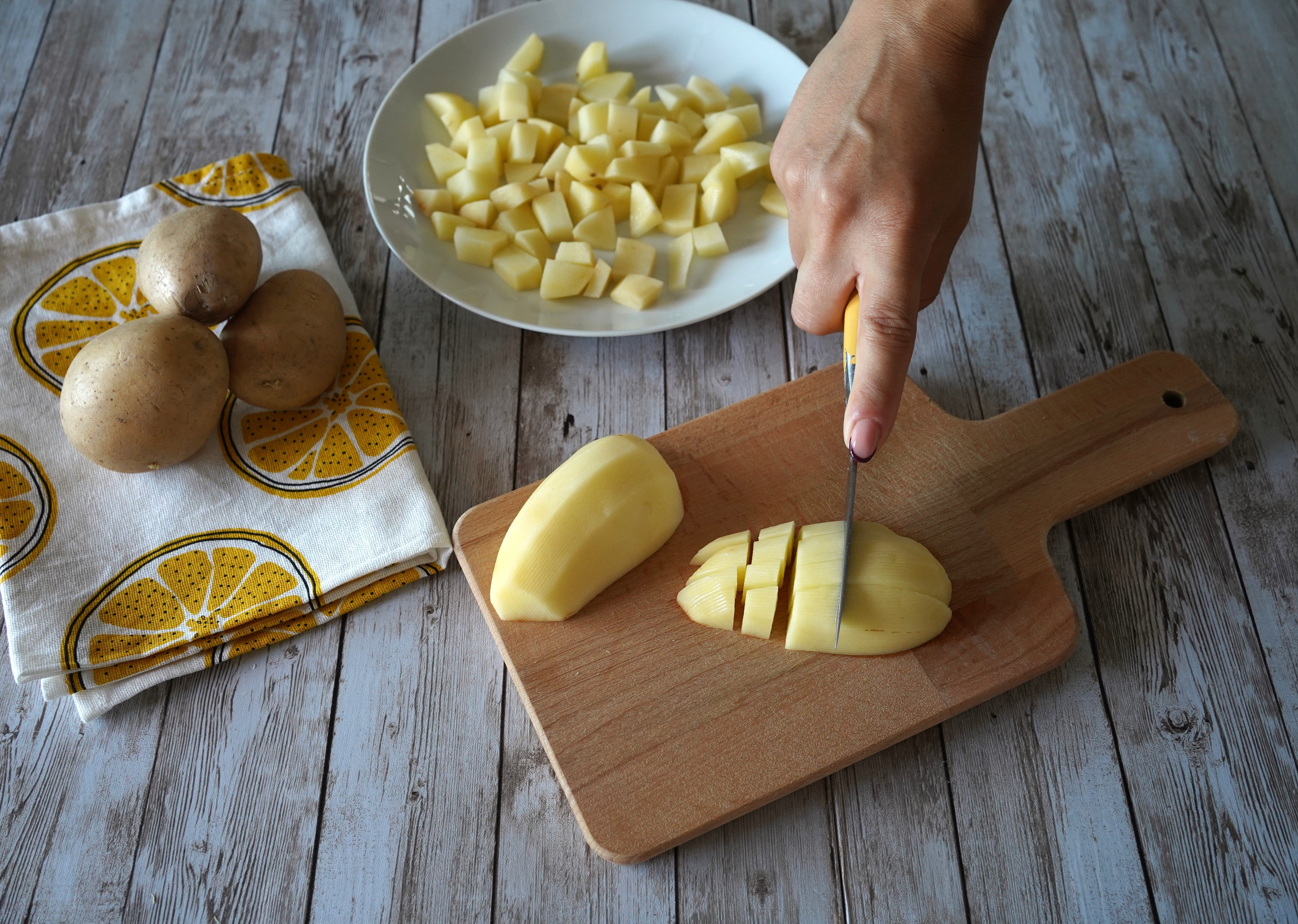;Resize,width=712;)
Peel the potatoes, cut them into cubes and blanch them in salted water until they are soft; then drain them and set aside.
Peel the potatoes, cut them into cubes and blanch them in salted water until they are soft; then drain them and set aside.
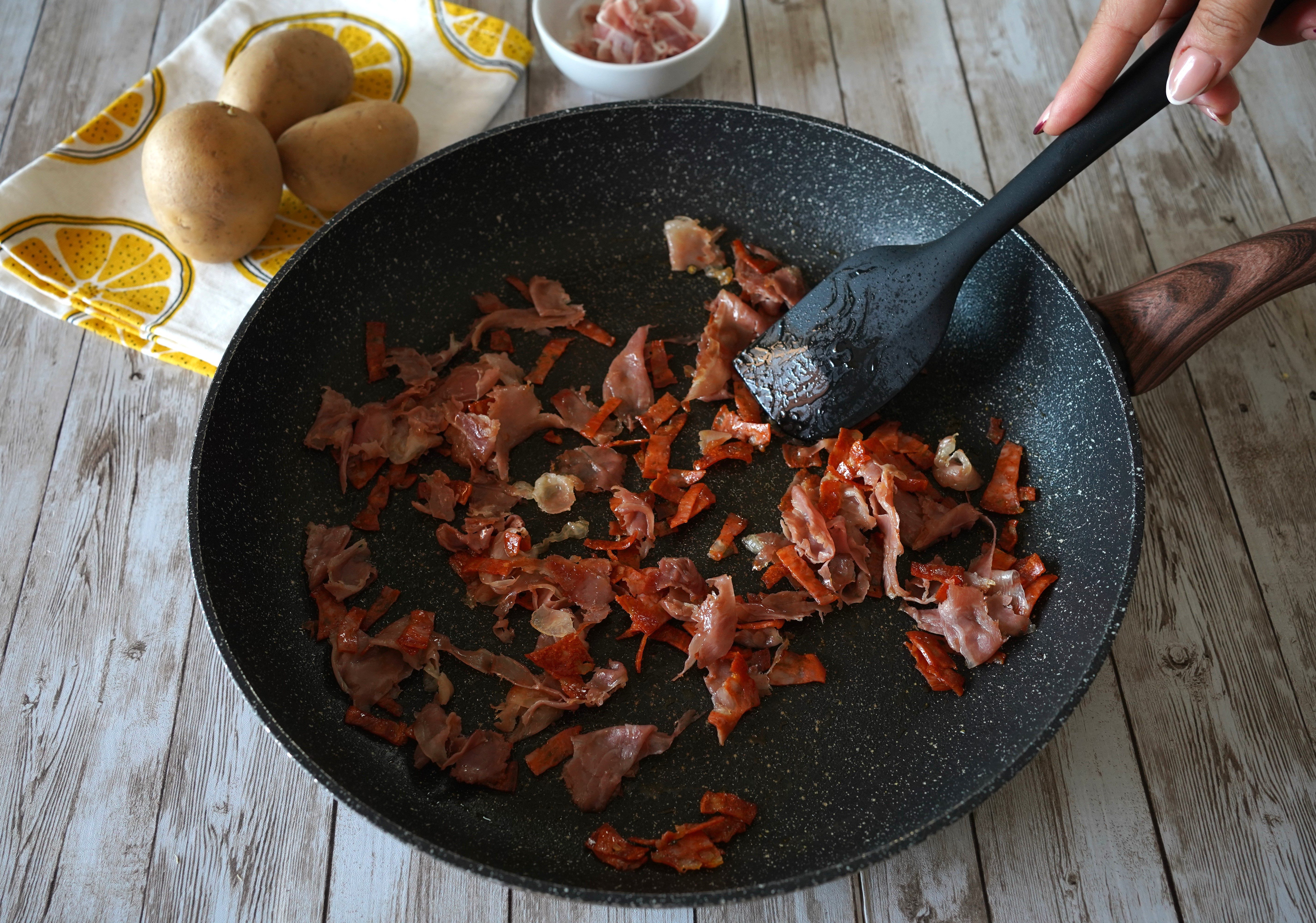;Resize,width=712;)
Brown the chopped chorizo in a non-stick pan with the chopped prosciutto.
Brown the chopped chorizo in a non-stick pan with the chopped prosciutto.
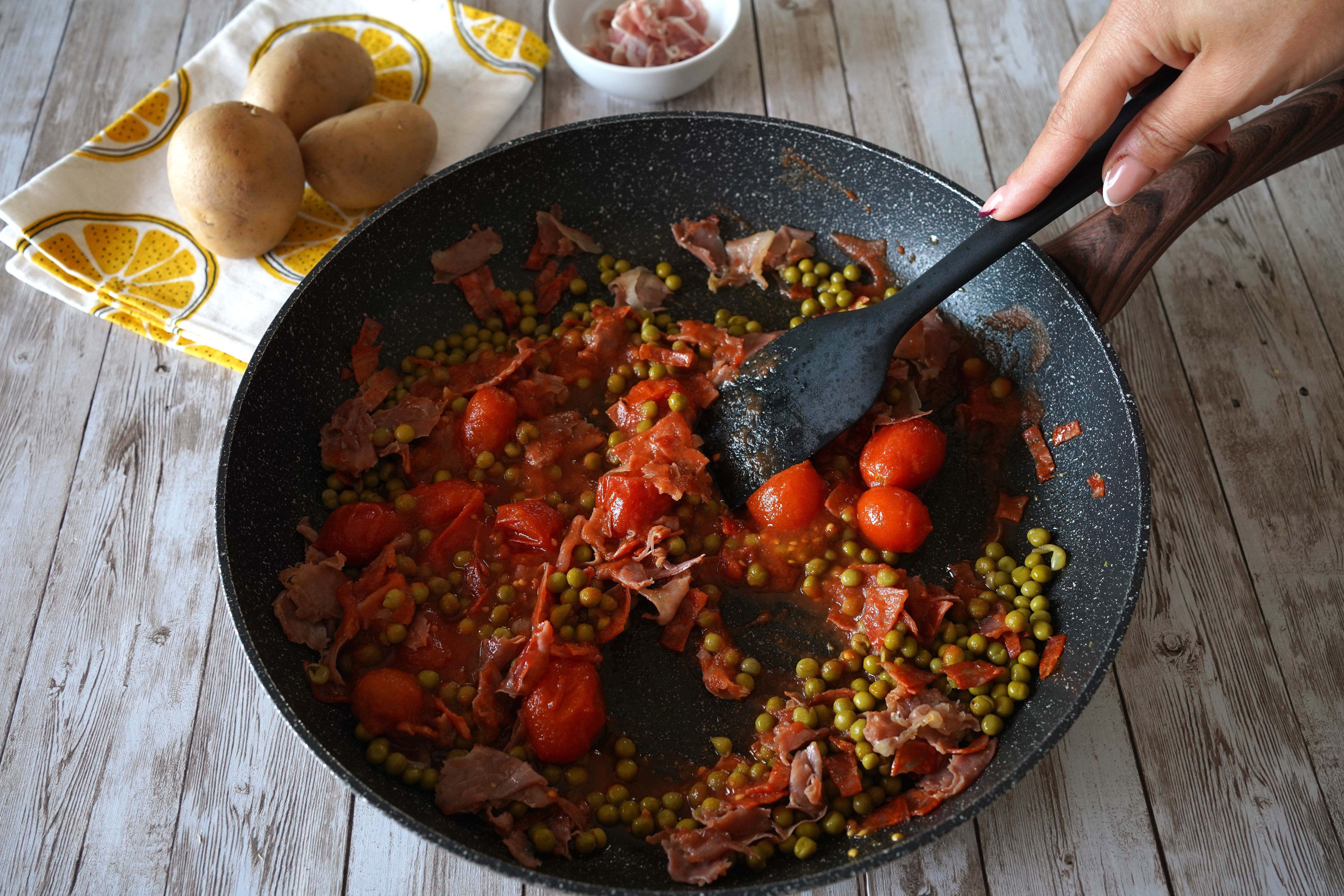;Resize,width=712;)
Pour the peas, cherry tomatoes and tomato puree into the pan, and let it flavor on a medium flame for about 15 minutes.
Pour the peas, cherry tomatoes and tomato puree into the pan, and let it flavor on a medium flame for about 15 minutes.
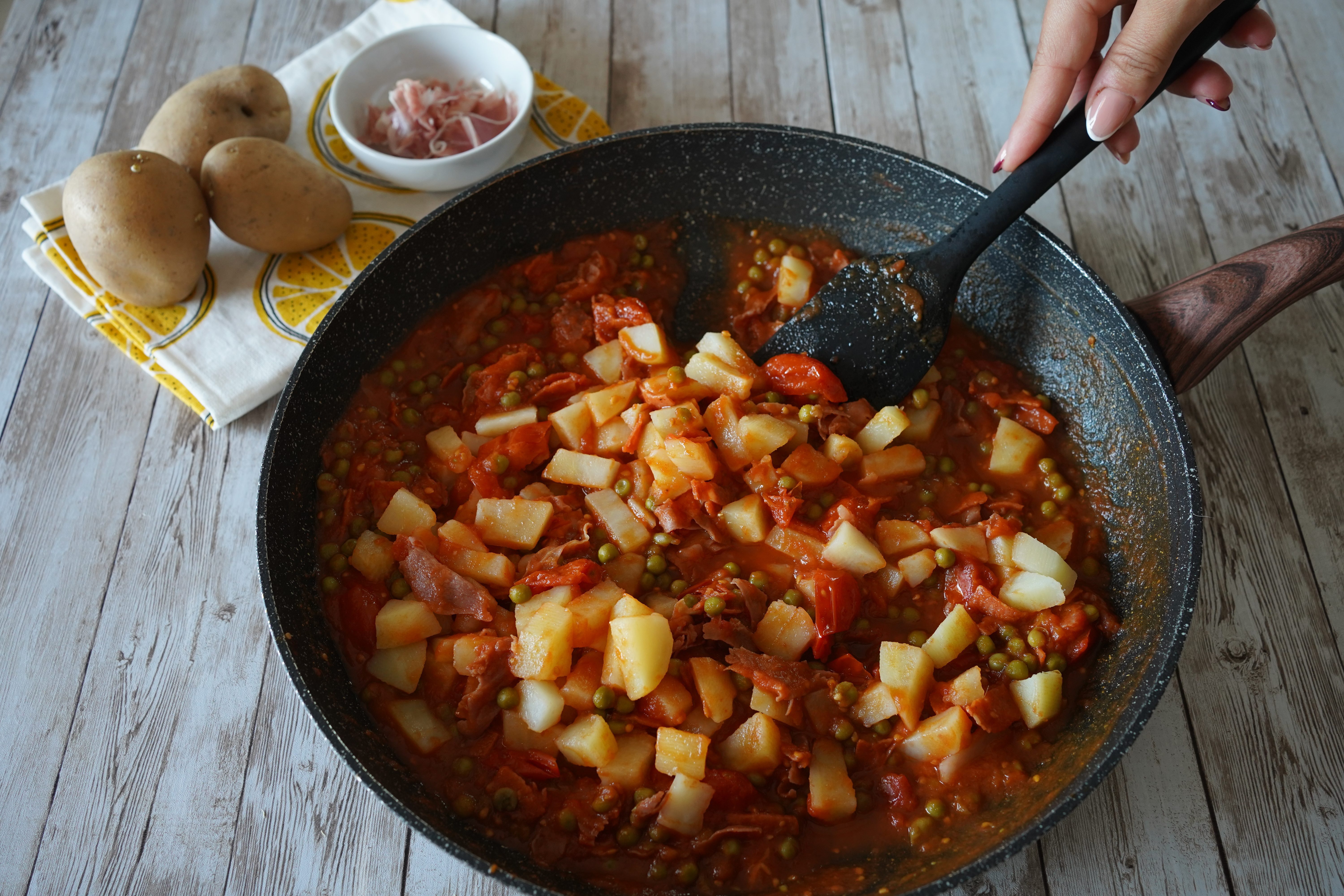;Resize,width=712;)
Once the time has passed, add salt and add the potatoes and continue cooking for another 10 minutes.
Once the time has passed, add salt and add the potatoes and continue cooking for another 10 minutes.
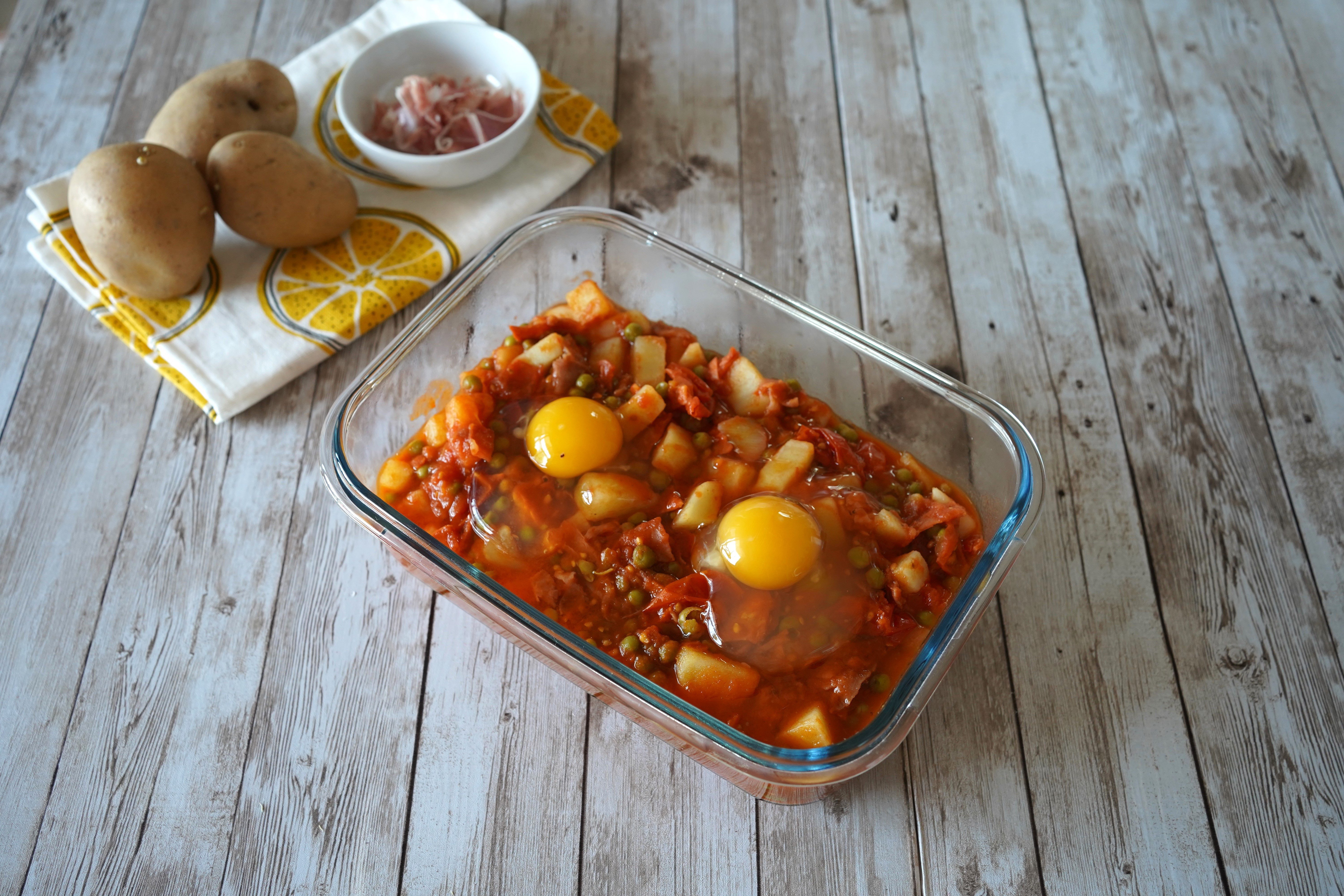;Resize,width=712;)
Once finished, remove from the heat, distribute everything in a baking dish and break the eggs on the surface.
Once finished, remove from the heat, distribute everything in a baking dish and break the eggs on the surface.
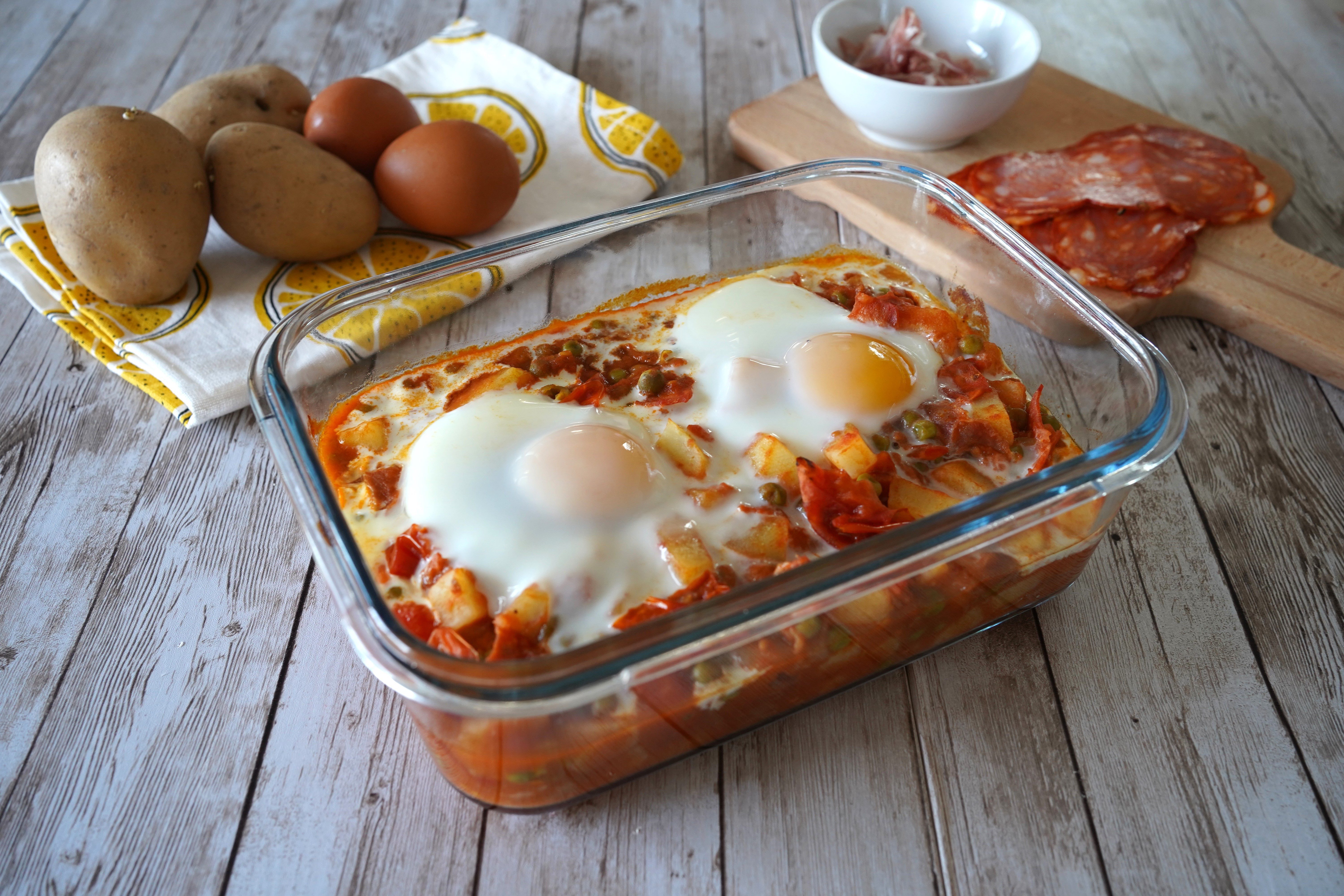;Resize,width=712;)
Cook the flamenco eggs in a preheated oven at 360°F/180°C, then take them out and serve them piping hot. Enjoy!
Cook the flamenco eggs in a preheated oven at 360°F/180°C, then take them out and serve them piping hot. Enjoy!
;Resize,width=767;)
